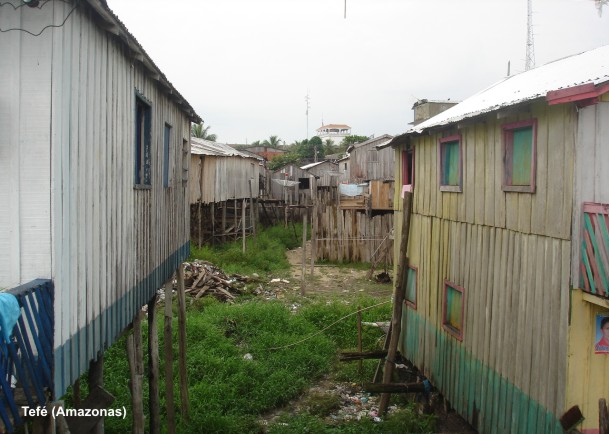QUATRO CIDADES REVISITADAS: RECIFE, SALVADOR, RIO DE JANEIRO E SÃO PAULO NOS RELATOS DE VIAGEM DO SÉCULO XIX (Four cities revisited: Recife, Salvador, Rio de Janeiro and São Paulo in travel diaries of the 19th century)
DOI:
https://doi.org/10.5654/acta.v4i8.318Abstract
Durante o século XIX, muitos viajantes europeus vieram ao Brasil e se surpreenderam não apenas com a natureza exuberante, mas também com as características de algumas de suas cidades, como Recife, Salvador, Rio de Janeiro e São Paulo. Esses viajantes registraram suas impressões em diários e relatos de viagem, que apresentam detalhes desses lugares e de modos de vida peculiares aos habitantes do Brasil nesse período. Maria Graham, Robert Burford, Saint-Hilaire, Spix e Martius foram alguns desses europeus que contribuíram significativamente para o registro da paisagem urbana, e dos usos e costumes dessa época. Muitos desses viajantes estiveram no Brasil na primeira metade do século XIX, quando a cidade brasileira começava a se re-europeizar sob influência da França e da Inglaterra. Embora pretendessem uma certa imparcialidade, evidenciaram em seus textos uma crítica acentuada pela comparação com o continente europeu – que de fato correspondia ao seu repertório de imagens e lembranças. Para esses viajantes, as casas e os jardins não eram concebidos aqui segundo os preceitos da Arte como acontecia na Europa; as ruas não tinham calçamento ou iluminação de qualidade como nas cidades européias; o clima era ameno e a paisagem, pitoresca. A cidade, vista de longe, encantava por situar-se em meio à natureza; vista de perto, entretanto, era severamente criticada em seus aspectos urbanos e construtivos. Mas inevitavelmente atraía o olhar europeu – interessado no pitoresco, no anedótico, no exótico, em tudo que era diverso de seu local de origem. Palavras-chave: Cidade brasileira; século XIX; relatos de viagem. ABSTRACT During the 19th century many European travelers came to Brazil and were astonished not only at nature itself but also at some characteristics of Brazilian cities. These travelers wrote their impressions on diaries which present details of these places, as well as of ways of life peculiar to Brazilian people by this time. Maria Graham, Robert Burford, Saint-Hilaire, Spix, and Martius were some of these European travelers who contributed significantly to register aspects of Brazilian urban landscapes, people’s behavior and habit from that time. A great part of these travelers was in Brazil in the early half of the 19th century, when the Brazilian city started a process of ‘re-europeanization’ under French and English influence. Notwithstanding their trying to be impartial, there are lots of comparisons throughout their texts between the new and the old continent – which corresponded to their repertoire of images and remembrances. To these travelers, Brazilian houses and gardens were not conceived with Art as it happened in Europe; streets were not paved and did not present a reasonable illumination system; climate was warm and landscape always picturesque. Seen from far away the Brazilian city seemed enchanting to the European eye mainly for being surrounded by nature; however, from its streets, it was heavily criticized for its urban and building aspects. In spite of this, it would ever catch the attention of European people always interested in picturesque, and exotic views, and in everything that was different from the place they came from. We aim here to characterize four Brazilian cities – Recife, Salvador, Rio de Janeiro and São Paulo – in the way they are described and analysed in traveler’s writings from the 19th century, emphasizing their critical point of view concerning the urban space. Keywords: the Brazilian city; 19th century; traveler’s writings. DOI: 10.5654/actageo2010.0408.0002Downloads
Downloads
Published
Issue
Section
License
PORTUGUÊS A Revista ACTA Geográfica deterá os direitos autorais dos trabalhos publicados. Os direitos referem-se a publicação do trabalho em qualquer parte do mundo, incluindo os direitos às renovações, expansões e disseminações da contribuição, bem como outros direitos subsidiários. Os(as) autores(as) têm permissão para a publicação da contribuição em outro meio, impresso ou digital, em português ou em tradução, desde que os devidos créditos sejam dados à Revista ACTA Geográfica.
ENGLISH ACTA Geográfica Journal will obtain the auctorial rights for all published texts. This also implies that the text can be published anywhere in the world, including all rights on renewal, expansion and dissemination of the contribution, as well as other subsidiary rights. The author’s get permission to publish the contribution in other medias, printed or digital, itmay be in Portuguese or translation, since the publication is credited to ACTA Geográfica Journal.

Este obra está licenciado com uma Licença Creative Commons Atribuição 4.0 Internacional.










